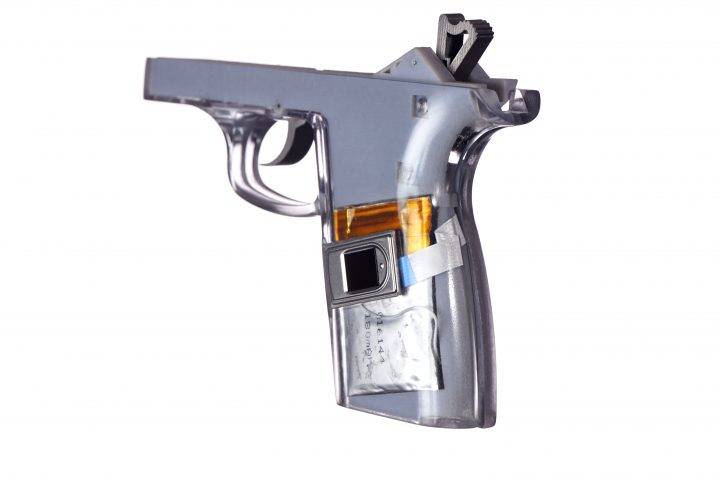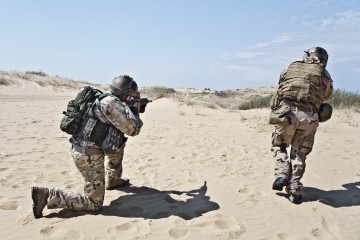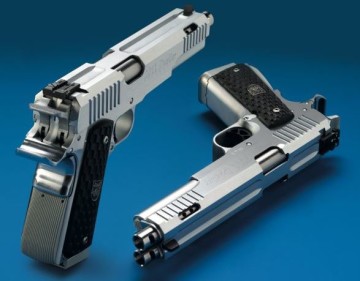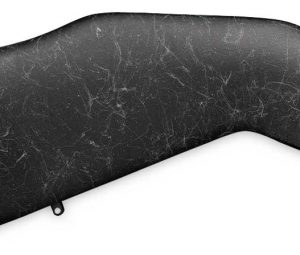New Smart Gun Unlocks Like an iPhone
19-year-old develops the technology, but it has some drawbacks.

One of the things that gun safety advocates have pushed for over the past few years is smart gun technology. This technology would treat a gun in a manner similar to a locked keyboard or door entry code that only unlocks with a code that the gun owner knows or by a fingerprint or some other personal identification method. Now, a 19-year-old has invented a handgun that unlocks like an iPhone.
The Wall Street Journal published a lengthy article about it on October 7. The inventor, Kai Kloepfer, is an MIT undergraduate student who feels America has a gun violence problem. He created a smart gun that utilizes military grade fingerprint software so that only the gun’s owner can use the weapon. He calls his company Biofire Technologies using the tagline Smarter Firearms Through Biometrics. We’ve talked about this technology before, to help explain some of the criticisms that people have about them. Some people say that a fingerprint lock won’t work if someone’s hands are covered in blood, for instance. Some people argue that criminals may resort to such extreme behavior as cutting off people’s hands in order to use the fingerprints to unlock guns. What happens if there’s a widespread power outage and the battery that runs a fingerprint lock can’t be recharged? Or there’s some other unexpected problem with the technology? It’s not a perfect scenario, even though in many people’s minds, gun locks would help prevent unlawful or stupid discharge of a weapon.
In this case, Kloepfer used crowdfunding websites such as Kickstarter to fund his invention. He got the funding he sought and is now building a live-firing prototype. He unveiled his design and concept at the San Francisco Smart Gun Technology Symposium over the first weekend in October. While we commend the young man for making this invention and his intentions behind it, there is a problem. The fact is, the gun takes about a second from when a fingerprint touches the sensor. It locks pretty quickly, in about half a second. The intent behind this is that if the gun is kicked out of someone’s hand, for instance, it locks quickly so that the criminal can’t grab it and immediately be able to fire.
That’s the problem. If it’s dropped, it locks. So in that case, the lawful owner who is trying to defend themselves can’t quickly pick it up and go back to shooting. They have to wait until it recognizes their fingerprint and then unlocks, at a minimum of a second later. That means a person could be legitimately vulnerable for long enough that they could be shot themselves or the person they’re trying to defend themselves against could do something else to them. One or two seconds can mean the difference between life or death.
The WSJ article also outlined the fact that the gun’s technology is “water proof.” this protects the locking mechanism, obviously, but also means the gun won’t work if the user’s hands are wet. What if the person is just coming out of a swimming pool, or shower, or is on a boat. There are so many possibilities for why and how someone might try to operate a gun with wet hands that we can’t even list them all here. What about if someone is out jogging on a hot day and they’re sweaty? Or not even jogging, just enjoying a barbecue in their back yard on a 90-degree day? The other issue is that the fingerprint locks means that people can’t use the locking mechanism if they are wearing gloves. So this also affects people who live in cold weather, which increasingly, seems to be most of the country with the weird weather we’ve been having the past few years. Yeah. Not being able to operate a gun quickly and with bare hands is a problem.
We appreciate that technology is trying to solve some of the problems of gun violence. However, there are clearly some aspects of this technology that put the user at a distinct disadvantage. Maybe someday smart technology will be developed that will actually solve these problems, but in the mean time, safe, responsible gun ownership and addressing the social issues that lead to crime seem like a much better use of time and money.
Image courtesy of Biofire Technologies.













